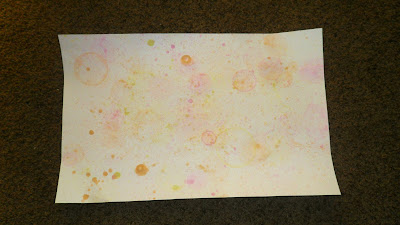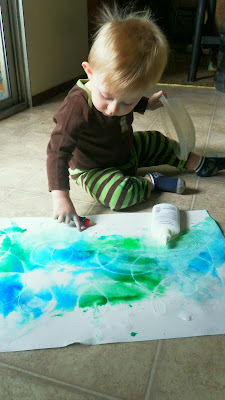I was browsing through the art and craft aisle looking for something to experiment with, and came up empty handed. Wandered to the seasonal aisle and was struck by an idea that I had a few years back when I tried to make colored bubbles for my photo scavenger hunt. The bubble color was not noticeably different, but when they popped, they splattered blue everywhere (which is the color of food dye I added). I wanted to take this a step further and see if we could capture it on paper.
Being almost Easter, and not knowing what my food color situation was at home, I grabbed a few egg color kits. I can always use them for something! I then found an 8 pack of bubbles for $2.00. A match made in heaven. We went home right away!
 |
| Here are our supplies! |
 |
| I added 1 color tablet to each bottle of bubbles . I don't recommend shaking the bubbles, but I did let them sit for 10-15 minutes to let the color tablet dissolve, and gave it a quick stir to mix. Here are a few of our masterpieces! |
 |
| The longer the bubbles stayed on the paper without popping, the better the color circle. |
 |
| This was really fun! |
Also check out our book blog! http://dannysmith0326.blogspot.com/






















































